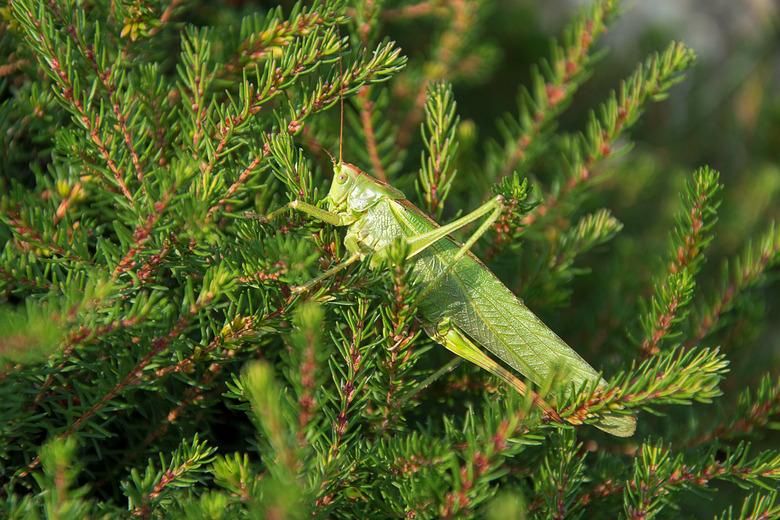How To Tell A Cricket From A Grasshopper
Crickets and grasshoppers are often confused and with good reason. Both insects are members of the order called Orthoptera, which consists of insects with four wings and hind legs that are developed for jumping. In addition to crickets and grasshoppers, the Orthoptera order includes katydids and locusts. To understand the difference between the grasshopper and cricket, it also helps to understand what they have in common.
Traits of the Orthoptera Order
Traits of the Orthoptera Order
The Orthoptera insect order is one of the largest groups that feeds on plants. The name of the order comes from the Greek words for "straight" and "wing," referring to the structure of the front wing. In addition to having hind legs that are adapted for jumping, most of these insects have a cylindrical body and fan-shaped back wings that are protected by long, thick front wings. Many of the species in this order are able to make sounds, like the familiar cricket or grasshopper noise. An additional important feature of this order are powerful mouthparts that are adapted for biting and chewing. They are often considered to be pests by farmers and cause serious economic damage due to their feeding habits. They also complete with livestock for food.
More than 24,000 species in the Orthoptera order have been identified around the world, including approximately 1,300 in the United States. They are found in greater numbers in warm, tropical climates, during summer months. Only a few species are found in colder areas. Both grasshoppers and crickets can be found in forests, meadows and grasslands. While grasshoppers and crickets tend to be larger in size than most insects, members of the Orthoptera order can be as small as 1/4 inch in length.
Insects in this order typically have a three-stage life cycle consisting of egg, nymph and adult. The eggs are usually laid and hatched in groups in soil or vegetation, though some species incubate eggs within the female's body. When hatched, nymphs are smaller versions of adults, minus wings and reproductive organs. The adult lifespan of insects in this order varies but averages from one to two months.
Grasshopper vs. Cricket
Grasshopper vs. Cricket
Grasshoppers are more commonly compared to locusts than to crickets. They are herbivores, meaning they feed on only plants, and are found in prairies and grasslands. They are larger than crickets, reaching up to 4 inches in length. Their bright green color helps them blend into their surroundings. Most grasshoppers have functioning wings and can both fly and jump.
Crickets are scavenging omnivores that eat plants as well as smaller insects and larvae. Some cricket species have front legs that are adapted for digging while others live in caves. Smaller than grasshoppers, crickets are rarely more than 2 inches in length. They are nocturnal, which means they are active at dusk and during the night, and are usually colored brown or pale green. Crickets have much longer antennae than grasshoppers. Many of them are wingless and move by jumping instead of flying.
Cricket and Grasshopper Sound
Cricket and Grasshopper Sound
One of the most well-known characteristics of both crickets and grasshoppers is their ability to make and detect sounds. Grasshoppers make a chirping sound by running their hind legs against their wings. They detect the sound by listening through organs located in the abdomen. The characteristic chirp of crickets is produced by rubbing their wings together. Crickets detect sound through organs in their front legs. The chirping sound of these insects is called stridulation. It is an important part of the courting and mating process. Only male crickets chirp. Both male and female grasshoppers have the ability to chirp, though it is mostly only males that do so.
Cite This Article
MLA
Watson, Catie. "How To Tell A Cricket From A Grasshopper" sciencing.com, https://www.sciencing.com/tell-cricket-from-grasshopper-2066009/. 22 November 2019.
APA
Watson, Catie. (2019, November 22). How To Tell A Cricket From A Grasshopper. sciencing.com. Retrieved from https://www.sciencing.com/tell-cricket-from-grasshopper-2066009/
Chicago
Watson, Catie. How To Tell A Cricket From A Grasshopper last modified March 24, 2022. https://www.sciencing.com/tell-cricket-from-grasshopper-2066009/
